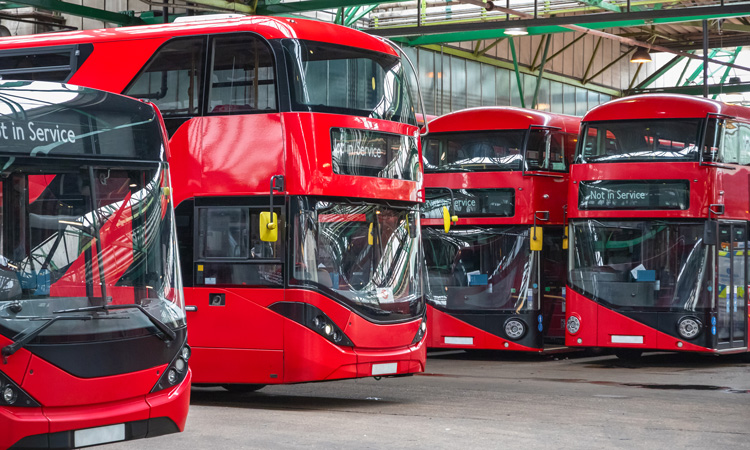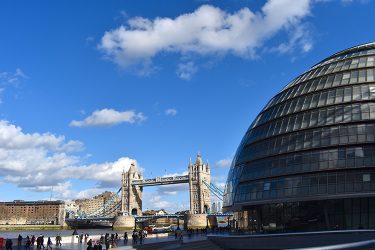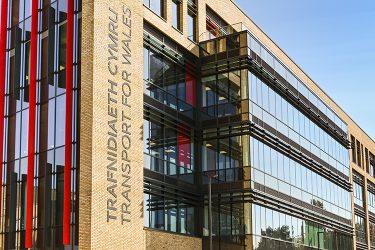Technology-backed franchising: the model for a better bus sector
- Like
- Digg
- Del
- Tumblr
- VKontakte
- Buffer
- Love This
- Odnoklassniki
- Meneame
- Blogger
- Amazon
- Yahoo Mail
- Gmail
- AOL
- Newsvine
- HackerNews
- Evernote
- MySpace
- Mail.ru
- Viadeo
- Line
- Comments
- Yummly
- SMS
- Viber
- Telegram
- Subscribe
- Skype
- Facebook Messenger
- Kakao
- LiveJournal
- Yammer
- Edgar
- Fintel
- Mix
- Instapaper
- Copy Link
Posted: 17 November 2020 | Peter Bell - Trapeze Group | No comments yet
In a detailed Q&A, Peter Bell of Trapeze Group Europe offers his insight into why franchising could be the model of choice for bus companies in a post-COVID world.


How important do you think franchising could be in the UK public transport sector’s bid to become better integrated?
I think that franchising is going to be essential. The reality of the situation post-COVID is that passenger numbers are going to be depressed. If we don’t want to see further drop-off in people using public transport, we’re going to have to find a better way of delivering at least the same level of service with fewer resources and with less income. In large urban areas a franchised model would enable us to achieve that objective, and of course Transport for London has already shown very successfully that franchising can deliver excellent service.
If you look at other large conurbations across Europe and North America, they don’t have this sort of free market approach. They have a model where a centrally controlling transit authority designs the routes, works out the fare structures, incentives and so on. In parts of Europe and at TfL, the actual services are delivered by bus operators who are good at managing fleets, managing the staff to deliver those fleets and so on; ultimately, franchising allows these companies to play to their strengths.
The only question I have around franchising is whether there might be a slightly different business model that is appropriate in areas with multiple local authorities, where there isn’t a central controlling transit authority and you have one or two dominant operators in the area. In that case, franchising might introduce complexity that is unnecessary. To date, though, that has proven to be a very specific and rare case – to me there is no doubt that franchising is needed in our large conurbations.
Do you think we’re going to see more combined authorities popping up across the UK in an effort to move towards this model?
Yes, I think we will move to more combined authorities or to transit authorities. In Scotland this already exists with the likes of SEStran, where a number of local authorities have come together to, in effect, create a regional authority that manages transport in their area.
There’s a good chance we will start to see that model applied in England as well, which would make it much more feasible to look at franchising as a model. Similarly, Transport for Wales is looking at options for a franchised-like model in the bus sector.
In the past, some operators haven’t been keen to embrace the concept of franchising. It is possible that in a post-COVID world a franchise model will be more attractive to them because it essentially removes the risk and uncertainty they are currently facing – and which could be here for some time. Bus operators in many regions were already operating on fairly thin margins before COVID-19, and it is harder for them to operate a profitable business in the present circumstances. Therefore, I would expect to see at least some relaxing of views in terms of opposition to franchising.
At the same time, my Trapeze colleagues who work closely with the commercial operators would doubtless like me to emphasise that they are experienced at delivering systems and services which help operators when required to work within a franchised model.
How do you think that changes things from the authorities’ perspective?
It changes things in a number of ways. If you look at the likes of Transport for Greater Manchester (TfGM), who are open about the fact that they want to move to a franchising model, they’re going to have to start upskilling, because today their role is more that of a regulator than of an operator. They will need people who are concerned with aspects such as route network design and they’ll also need to upskill in technology. A whole raft of new technologies will be required to actually deliver franchising – I’m not sure that transit agencies today have those skills. If you go outside London and the Public Transport Executives (PTEs), the situation becomes even more challenging. Today’s local authorities have no real skill in network design, or in contract letting with operators, and that will be a major challenge for them moving forward.
Another interesting point is that franchising changes the political dynamics quite substantially. In most local authority areas today, local councils are frustrated they have no ability to control the transport network, but at the same time, they do have some ability to explain that the problem is not of their making – they can blame the bus operators. However, if they moved to the brave new world of franchising, suddenly the elected politicians are in the firing line.


Peter Bell believes that under a franchised system, politicians like those in City Hall have to take more responsibility for decisions.
The model can be something of a double-edged sword in this way. Difficult decisions – such as which services to cancel or which bus stop to lose – are decisions that politicians will suddenly be intimately involved in. That brings its own set of challenges, which I feel can only be addressed by making sure there’s good data to back up any decisions made. Post-COVID, with fewer people using the buses, there won’t be an infinite amount of cash available, and so difficult decisions will have to be made – I think it’s right that politicians make those decisions.
How can technology help to connect public transport services under a franchise model?
We can look to London and the work of Trapeze with TfL to see quite a lot of that already. Firstly, new IT systems will be needed to run the whole franchising and tendering process. This needs to be done in a much more automated way. To some extent, a small amount of that happens today for supported services, but in the future, the number of tenders that councils will be issuing will be substantially larger. They need to be able to push details of the type of service they’re tendering, the specifications for that service and what responses they’re getting back. This is something that we’re working on very closely with TfL in the new Adiona system. That type of solution will be needed both by the PTEs and regional transit agencies in order to manage the franchise process.
Secondly, authorities will to see how well the bus operators are complying with the contracts through KPI management tools. In London, the London Reporting Database does this in a fairly automated way. The same sort of process will also need to be used in other transit agencies that receive data about headways, excess waiting times and so on. They will need to be able to automatically apply in a way that operators can trust that the system is being fair and applying the KPIs in the right way. Again, in London, we’ve done a good job of convincing operators that the system does this well. The same level of rigour will be needed in other authorities in the future. Without this in place, authorities will need large departments to check what the systems say.
As I mentioned earlier, one of the reasons this is necessary is to maintain the same level of service, or that the travelling public perceive the same level of service, with fewer resources. I think dynamic scheduling is going to be a key part of that, but dynamic scheduling – done well and in a franchise model – has to be backed by technology to make it happen.
There are two issues: firstly, how do you work out what the demand is and then dynamically reallocate resources to that demand? Secondly, how do you construct KPI measurement and the contracts that are built on top of that KPI management in an area where services might need to be incredibly flexible?
For example, what happens if you wanted an operator to take six buses from one route and operate them on another? It is complicated enough if services on those two routes are run by the same operator, but something else entirely to ask a bus operator to take those buses and move them to a route they’re not currently operating. The tools we need in future will have to be that much more dynamic in terms of their ability to take care of those scenarios.
Dynamic scheduling will also require better passenger information. Passengers need to know when the bus is due to arrive at a stop, not just within the next few minutes, but over extended periods – for example, if the local authority’s controllers are about to switch two extra buses to that route or, equally, if they’re reducing the service. The difference between having that information and not having it might also be the difference between getting to a job interview on time or not.
In future, we would like technology to actually help guide users into best decisions and, through that, introduce a new degree of demand management. In our current scenario, that might take the form of knowing the alternative route home, but also being able to weigh up whether one is more risky than another due to crowdedness.


Transport for Wales are looking at implementing a franchise model.
Finally, there is the need to move to more real-time journey planning. Doing so is actually quite a challenge because there are costs associated for a passenger in terms of moving away from a familiar route. As an operator or authority, you don’t want to be constantly changing the information you provide. As a user, however, there may come a tipping point where a bus on a familiar route is running late, but you choose to wait because that familiarity is a comfort of sorts.
How can technology be used to better connect transport operators with their passengers and the information that they need?
All journey planning needs to achieve greater management of door-to-door travel. One of the challenges that we all have, particularly when using a less familiar route, is interchanges. A further challenge for our times now is how to manage interchanges in future.
I think part of the new business model for public transport is around makings multimodal trips work much more effectively. This is something that European transport agencies generally do very well, with connecting services including rail and metros. If we move to a new franchising model where we’re trying to deliver more with less, then making cross-trip journeys more straightforward is going to be essential.
What are the benefits from a vendor’s perspective of both franchising and technology adoption?
From a vendor’s point of view, it gives us opportunities to explore how best to deliver the new model – and that inevitably leads to technological transformation and innovation. We are moving much more to cloud-delivered services. Importantly, we’re taking the opportunity as we move to these new products to do something of a technology refresh. Where everything is web-delivered now, we’re able to integrate with more modern mapping platforms and so on.
New technology is allowing us to provide better tools for collaboration between operators and local authorities or transit agencies. I would also say it’s providing better collaboration tools within the transit agencies, particularly somewhere like TfL, where any one tender probably has multiple departments involved in specifying and delivering that tender. A tool that enables that to be done in a systematic way, allowing input from all sides, is a major step forward compared to manual and laborious processes currently in place for so many.
Do you think there’s a way to improve on the status quo without moving ahead with franchising? What are the main challenges in adopting this new model?
The most obvious way is to improve the bus registration process. At the moment, it’s quite slow in terms of the lead time on changes that operators want to make to services. The current process doesn’t really support the dynamism that operators or authorities want to introduce to their networks.
It might seem controversial for some, but another way is to have transport authorities or PTEs begin publishing their KPIs. This would be of interest to both the elected politicians who are looking at the network’s operations and to the travelling public. Who wouldn’t want to see the performance of ‘Operator A’ against the performance of ‘Operator B’ when arriving at a bus stop?
The final thing is already underway to some degree, but the UK’s transport network requires more joined-up real-time thinking. Being able to implement real-time across the whole bus network would be a huge step forward. The Department for Transport is already pushing that hard and I think that’s the right move for them to make.
Outside of the points you covered earlier around our ‘new normal’, how can authorities persuade operators to get on board with franchising?
I think it’s going to be really important to make sure that the KPI measurement and the contracts that franchising is built on are fair. If operators can’t make a reasonable margin out of it, that’s a pretty significant incentive that’s missing. If operators can see that they are still able to make a reasonable margin whilst at the same time reducing their risk from passenger fluctuations, I think they would come on board with franchising.
Outside of the economics, though, the shift to a new model will be technology-enabled. If authorities and PTEs can come up with good KPI measurements – something that the bus operators know they can control and that’s fair for them, but that is also tied into the economic model – there are very few reasons for operators not to engage in franchising.
Biography
Peter Bell is a Chief Technology Officer for Trapeze Group in Europe, focusing on advanced product development in the European public transport business.
He has been involved in delivering innovative products for over thirty years and has a B.Sc. and PhD in Computer Science from the University of Manchester, UK. Peter has been with Trapeze since 2008 where he has led the development of a number of new products for public transport applications.
Related topics
Business Models, COVID-19, Fleet Management & Maintenance, Journey Planning, Multimodality, Passenger Experience, Public Transport
Related modes
Bus & Coach
Related cities
United Kingdom
Related organisations
Transport for Greater Manchester (TfGM), Transport for London (TfL), Transport for Wales (TfW), Trapeze Group
Related people
Peter Bell








